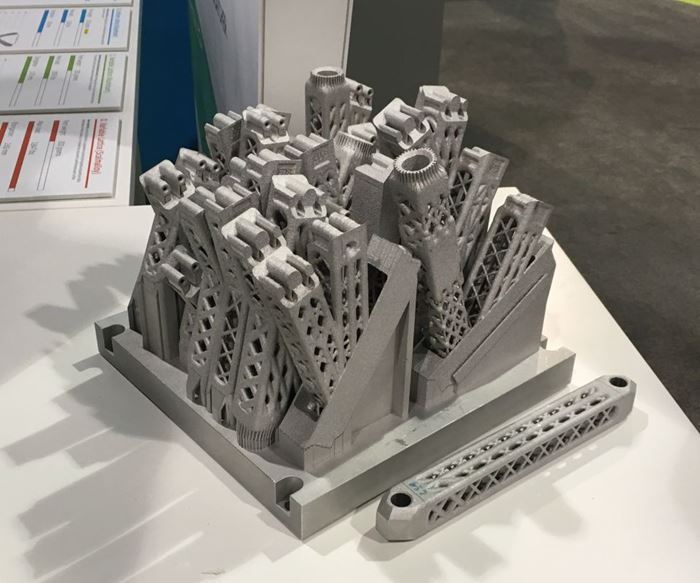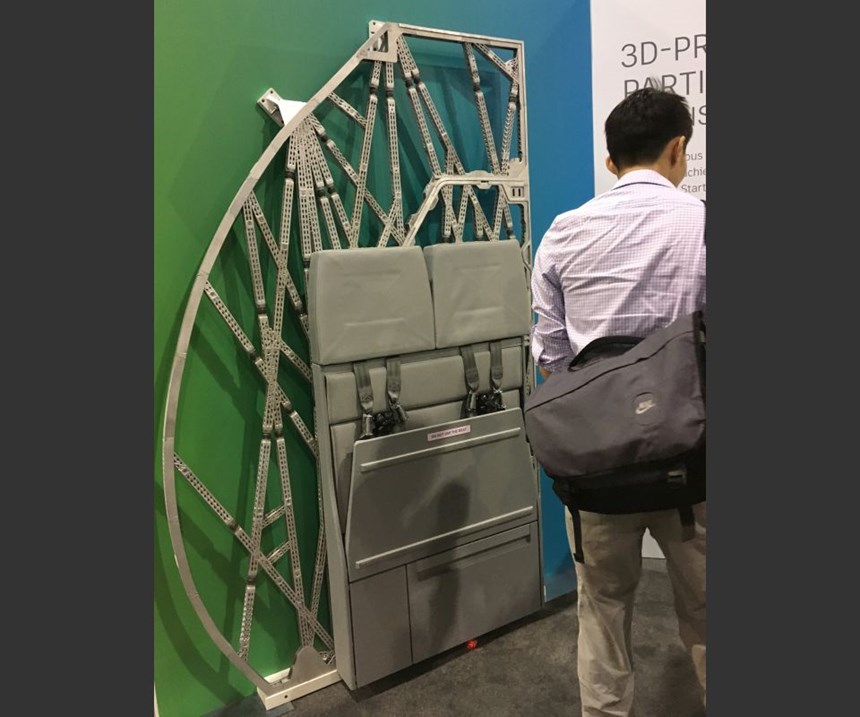Additively Manufacturing a Large Component with a Small Work Envelope
Airbus successfully reduced the weight of an aircraft partition by redesigning it for additive manufacturing. The large component was produced in pieces, with connection features built-in.
Share







Autodesk, Inc.
Featured Content
View More
ECi Software Solutions, Inc.
Featured Content
View More


Hwacheon Machinery America, Inc.
Featured Content
View More
Direct metal laser sintering (DMLS), an additive process that builds parts by laser sintering layers of metal powder, makes it possible to create parts with mesh or lattice structures that reduce weight while maintaining strength. However, the relatively small build envelopes of powder-bed DMLS systems mean that the large parts that could benefit most from weight savings can't be made complete inside of these machines.
Aircraft maker Airbus recently found a workaround for this challenge, successfully direct metal laser sintering the frame of a partition for A320 aircraft that separates the passenger compartment from the galley. The original solid aluminum alloy frame was redesigned for additive manufacturing with lattice-like structures that reduced its weight by 45 percent. However, the nearly 7-foot-tall frame is much larger than the envelopes of the additive machines that were used to produce it.
How was it done? The large component was grown in pieces that could fit inside a DMLS machine. These pieces included built-in connection interfaces to ease assembly.
Learn more about the approval process for the partition and how production will advance in this article from Additive Manufacturing, sister publication to Modern Machine Shop.
Related Content
-
Grob Announces Aerospace Technology Event
At the Aerospace Technology Day event — which takes place at Grob’s facility in Bluffton, Ohio, on November 19th, 2024 — attendees will see five-axis aerospace parts machined live, be able to consult with a panel of technical experts and more.
-
How to Meet Aerospace’s Material Challenges and More at IMTS
Succeeding in aerospace manufacturing requires high-performing processes paired with high-performance machine tools. IMTS can help you find both.
-
Kennametal Turning Tools Enhance Small Part, Medical Machining
TopSwiss Micro Boring Solid tooling and KCU25B turning inserts are well suited for the small parts and medical machining space.

.jpg;width=70;height=70;mode=crop)

















.png;maxWidth=150)














